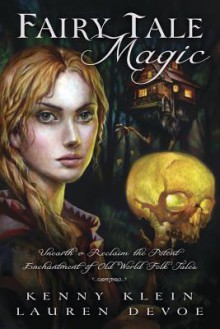

Jane Yolen is known as America’s Andersen, which is pretty accurate considering her volume of work and her use fairy tales in her writing.
But she has a Monty Python Streak. She does. Read “Dick W. and His Pussy or Tess and Her Adequate Dick” and tell me otherwise. I double dare you to read it while riding public transportation.
This collection presents a couple new tales with previously published work. The stories are geared, as you have no doubt discovered, to the more adult reader. They range from the absolutely hilarious to the political (a tale dedicated to Rushdie) to the most wrenching version of Rumplestilken you will ever read (“Granny Rumple”). Three of the stories are interconnected and concern the trials of a fairy family who finds itself sucked into Sleeping Beauty, Romeo and Juliet, and a bottle of bad wine. There is a harsh because of its truth version of Thousand Furs and a rather delightful version of Snow White. If you don’t like one story, odds are the following one will leave breathless from laughter or a darker emotion.

Disclaimer: ARC received via Netgalley. Additionally, I am not a Wiccan so I cannot speak about the rituals described in the book.
Fairy Tale Magic by Klein and Devoe fulfills two purposes. The first is to look at any magic rituals that might lie in the background of fairy tales, and the second, to show how similar beliefs can be applied in the modern age. I’m not a Wiccan, so I don’t know enough to evaluate the rituals in terms of that religion; I will say that the rituals in many cases do look as if they would make good meditation rituals as well.
The book is divided into section with a different tale representing or being used to illustrate a different type of a magic. Each chapter presents a rundown of the tale followed by a critical look; the last section of each chapter is a ritual instruction. There is an introduction which includes a brief look at what the difference between a fairy tale and a myth is as well as brief overview of the history of a the fairy tale. It felt, to be honest, as if something were slightly missing. Not enough, by any means to disprove the thesis of the critical part of the book, but in terms. While a good difference is drawn between fairy tale and myth, it seems as if addressing the linkage between folk tale and fairy tale would have benefited the thesis as well as a more detailed looked at oral tradition. With the lack of folklore, in some ways feels as if the elephant in the room is being overlooked. This is further by the reliance of Grimm and Lang stories in the back of the book - the Grimms, in particular, did edit the stories they collected to make them less objectionable. To use a Grimm story without a look at the unedited material seems off when you are connecting it to magic ritual.